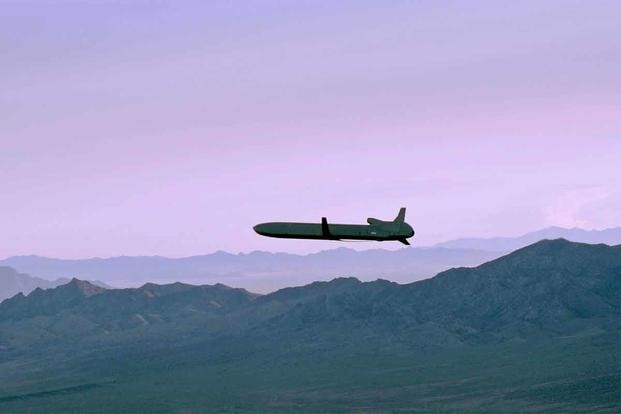The U.S. Air Force has awarded Raytheon Technologies $2 billion to develop the Pentagon's new air launched nuclear cruise missile.
Raytheon is helping to design and develop the Long Range Stand Off weapon, known as LRSO, the Defense Department announced in awarding the contract Thursday. The work is expected to be completed in February 2027 at which time it would transition into production.
The LRSO program will replace the 1980s-era AGM-86B Air Launched Cruise Missile, known as ALCM, providing an air-launched capability as part of the nuclear triad.
Read Next: Sexual Assault Prosecutions Should Change in 2023, Commission Recommends
The weapon is planned for the B-52 Stratofortress, as well as the B-2 Spirit and the future B-21 Long-Range Strike Bomber. Unlike weapon systems that can be upgraded later on after being delivered to the services, LRSO -- projected to have a range beyond 1,500 miles -- needs to meet all the requirements and certifications from the beginning because of its nuclear capability.
In 2017, the service awarded contracts to Lockheed and Raytheon to begin preliminary work on LRSO. The agreements were valued at $900 million each and were to last almost five years "to mature design concepts and prove developmental technologies," the Air Force said at the time.
Last year, the service selected Raytheon's design for LRSO over Lockheed Martin Corp., a move that wasn't expected until fiscal 2022.
The latest award is just one small piece of the broader overhaul of the total nuclear arsenal.
The Congressional Budget Office estimates it will cost taxpayers $1.2 trillion over the next 30 years to modernize the entire nuclear arsenal, including equipment within each leg of the triad -- lCBMs, strategic bombers and submarine-launched ballistic missiles -- and crucial communications.
In recent months, the Pentagon has faced increased scrutiny over efforts to develop next-generation intercontinental ballistic missiles to replace the nation's aging Minuteman IIIs.
Experts say the Ground Based Strategic Deterrent, or GBSD, program, overseen by the Air Force, could cost $85 billion to $100 billion for the ICBM infrastructure alone. The service in September awarded Northrop Grumman a $13.3 billion contract for the engineering and manufacturing development (EMD) phase for GBSD.
As a result, some progressive lawmakers have suggested relying solely on submarines and bombers to act as America's nuclear deterrent, according to a report from Defense News.
Top military officials have argued that an increased reliance on submarines and bombers would exhaust the force.
-- Oriana Pawlyk can be reached at oriana.pawlyk@military.com. Follow her on Twitter at @oriana0214.
Related: In Surprise, Air Force Picks Raytheon to Build New Cruise Missile












